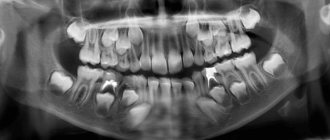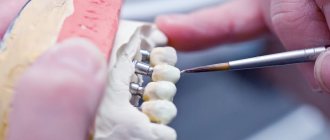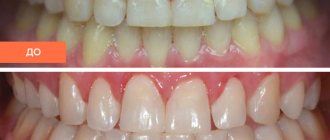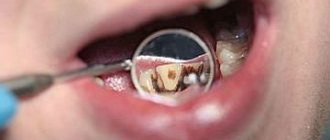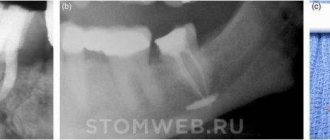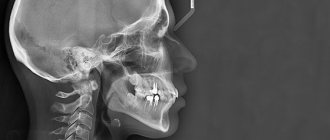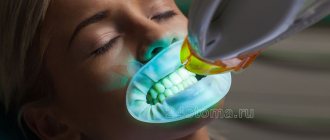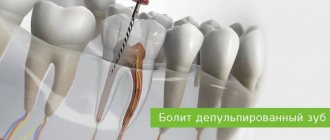Electrophoresis is a type of physiotherapeutic procedure that is used to treat various diseases. During electrophoresis, the human body is exposed to a direct electric current generated by a special apparatus. Using electrophoresis, a medicinal substance is introduced into the body through the skin and mucous membranes. Electrophoresis is prescribed by the attending physician after a thorough examination and exclusion of contraindications. The procedure is performed in a medical facility in compliance with all rules and regulations. There are devices for home use, however, they should also be used after consultation with a doctor and strict adherence to instructions and safety measures. It is better to entrust the performance of physiotherapy to professionals.
At the Yusupov Hospital you can take a full course of electrophoresis in the comfortable conditions of a rehabilitation center. Specialists perform this physical procedure with high quality, which contributes to the patient’s speedy recovery.
Electrophoresis for children
Electrophoresis is a modern, high-tech type of physical therapy treatment that involves transdermal (through the skin) delivery of medications to a painful area without the need to inject into muscle or soft tissue, administer the medication through a vein, or take pills. Instead, the liquid medicine is applied to a dampened pad and then applied to the sore area. Wires are then attached to the pad to an electrophoresis device, which delivers a low, direct electrical current that carries charged drug particles through the skin. The medicine can be administered from either the positive pole or the negative pole, depending on the type of medicine. It is safe, effective and inexpensive. Electrophoresis can help with various diseases, such as bursitis, tendonitis, in the treatment of the consequences of injuries, in the treatment of scar tissue. Electrophoresis in children is also used to treat neurological diseases and diseases of the respiratory system.
Electrophoresis with calcium: contraindications
Contraindications for the procedure include:
- increased sensitivity and individual intolerance to drugs containing calcium;
- electric shock intolerance;
- the presence of purulent foci of inflammation;
- damage to the skin;
- dermatitis;
- body temperature above subfebrile levels;
- oncological diseases;
- presence of a pacemaker;
- severe disruption of the cardiovascular system;
- severe impairment of the kidneys and liver;
- mental disorders.
Iontophoresis
There is a more modern modification of electrophoresis - iontophoresis, in which special long-term wearing patches are used to administer the drug, connected to a very weak direct current source (battery). During iontophoresis treatment, the patch is worn for a certain period of time, depending on the medication being taken. Some patches can be worn for up to 24 hours. The child will not feel pain from the treatment. Only a slight tingling sensation is possible while wearing the patches.
Use for diseases of the respiratory system
Electrophoresis is especially effective for pathologies of the respiratory system. This is due to its therapeutic effect, which is expressed in:
- acceleration of lymph flow;
- expansion of the bronchi when they narrow;
- improving blood circulation;
- activation of metabolic processes;
- relieving pain;
- increasing the activity of the immune system, in particular leukocytes;
- calming effect on the nervous system;
- decreased muscle tone;
- synthesis of biologically active substances;
- an increase in oxygen and the amount of ATP in tissues;
- activation of the reticuloendothelial system;
- inhibition of the inflammatory process;
- reducing the permeability of vascular walls;
- relieving swelling;
- improving regenerative functions;
- stimulation of antibody synthesis.
The use of electrophoresis in conjunction with calcium chloride enhances the existing effects and adds additional effects of the drug. These include:
- stopping bleeding;
- reduction of allergic reactions;
- relieving inflammation;
- replenishment of calcium deficiency.
These properties provide a powerful effect against cough and runny nose in infants, and also help to avoid the consequences and complications of diseases. Medicinal electrophoresis is used for many pathologies of the respiratory system. These include:
- bronchitis with chronic or acute course;
- pneumonia;
- bronchial asthma;
- vasomotor rhinitis;
- pleurisy;
- bronchiectasis;
- tracheitis.
Instead of calcium, phosphorus can be used, which has similar properties and indications. But it is more difficult to decompose into ions, so this technique is not so popular.
Benefits of electrophoresis for children
It is very important that transdermal administration of drugs allows one to reduce the current dose of medication, reducing side effects and preventing possible allergic reactions. For example, 5–10% solutions of substances are used to introduce local effects, and 1–2% solutions are used for segmental reflex effects. Electrophoresis allows for the most targeted administration of medicine to the affected area, without painful and frightening injections for children. Also, the effect of the drug is extended over time, reducing its one-time concentration in the blood. This also happens because a temporary “depot” of the drug is created in the skin, which gradually enters the blood. The medicine can remain highly concentrated in the skin for up to 21 days.
Among the various drug delivery systems available today, the transdermal drug delivery system has shown the best results in improving the quality of life of young patients due to the main advantage: avoiding first-pass metabolism of the drug through the liver, which would significantly reduce the effectiveness of the drug. Other clinical benefits include controlled delivery of drugs, maintaining stable plasma concentrations without pain. The stratum corneum, which is the outermost lipid layer of the skin, acts as a barrier to the absorption of highly polar and hydrophilic drugs. The penetration or absorption of such drugs can be improved using various penetration enhancers (dimexide) and physical and mechanical methods. Nowadays, electrophoresis and iontophoresis have become very useful techniques that transport charged drug molecules across biological membranes and tissues using a weak electrical current.
Mechanism of action
During the procedure, the patient’s body has a positive effect on two sides at once: stimulation with galvanic impulses and the direct effect of the drug. That is, drug electrophoresis has a complex effect on the body, simultaneously irritating receptors and increasing the degree of drug perception, as well as allowing ions into the body, which give a pharmacological effect.
In addition to the local effect on cells and tissues, electrophoresis triggers general autonomic reflexes. They can be caused from absolutely any area of the skin in which sensitivity is not impaired.
For a positive result of therapy, the placement of electrodes in the area of the diseased organ is not required.
This method is used to introduce CaCl2 and other drugs, the ions of which are normally present in the human body. At the same time, at the site of exposure, blood circulation and lymphatic drainage, metabolic processes are enhanced, and histohematic barriers are opened. This ensures the distribution of the drug throughout the body.
For electrophoresis, the current density is set to 0.01-0.1 mA/cm2. The exact figure depends on the area of the pad and the selected medicinal substance. The duration of the session is from 10 to 20 minutes, but can be extended to 60 minutes in special cases. The course consists of 15 to 20 visits, which are carried out every day or according to an individual schedule. If the patient requires more procedures, then after 30-60 days of rest he is again referred to physical therapy.
Side effects and risks of electrophoresis
Electrophoresis is a safe procedure. During treatment, it is important to avoid direct contact with the electrodes as this may result in mild electrical shock. Most children experience a tingling or burning sensation from the needles during the procedure. More serious side effects are rare and usually short-lived. Side effects of electrophoresis may include:
- Redness of treated skin
- Itching of the treated area for a short time after treatment
- Small blisters (vesicles) at the site where the medication was administered
- Dry and cracked skin or development of dermatitis
- Bruises or blisters if the current is too strong
- Moderate thickening of the skin with frequent treatment, which can be managed by reducing the frequency of treatments
Although these side effects from electrophoresis are expected to subside within a few days, emollients and moisturizers can be used several times a day to reduce symptoms. Sometimes topical corticosteroids may be required.
For what diseases is electrophoresis used?
Electrophoresis is used both for local treatment or pain relief, and for other therapeutic purposes:
- Reducing inflammation
- Resorption of edema and lymphostasis
- Relaxation of spasming muscles
- Reduced calcification formation
- Treatment of scar changes
Medicinal electrophoresis is carried out in the treatment of diseases:
- Muscle tone disorders
- Polyneuropathy
- Sleep disorders
- Enuresis
- Sinusitis, tonsillitis, otitis media
- Inflammatory bronchopulmonary diseases
- Treatment of eye diseases and correction of visual impairments
- Diseases of the urinary system
- Diseases of the gastrointestinal tract
- Skin diseases
- Postoperative period
Nasal electrophoresis with calcium
In the nasal area, electrophoresis is used to treat otolaryngological diseases, lung diseases, and dental pathologies. Electrophoresis acts locally and systemically, and its effect contributes to:
- reducing the inflammatory process;
- reducing swelling;
- accelerating regeneration processes;
- activation of the body's defense mechanisms.
Most often, electrophoresis with calcium in the nose is prescribed for:
- inflammation in the nasal cavity and sinuses (sinusitis, rhinitis, etc.);
- inflammation in the ears (otitis media);
- dental diseases (pulpitis, granulomas, etc.);
- lung diseases (bronchitis, pneumonia).
Before electrophoresis is carried out in the nose, the nasal sinuses are washed with water to free them from mucous masses and contamination. Next, special tampons are moistened with a calcium-containing preparation and placed into the nose to a depth of 1-2 cm. An electrode with two plates is placed in both nostrils, and the other in the area of the lower cervical vertebrae. During the procedure, the drug is well absorbed through the nasal mucosa and penetrates the nasal sinuses.
What is the treatment procedure?
The main advantage of the electrotherapy method is painlessness and lack of discomfort, which distinguishes it from injections and swallowing tablets. Medicines, transformed into ions, enter the patient’s body through intact skin or mucous membranes under the influence of direct or pulsed current. The effectiveness of treatment is due to the simultaneous influence of two factors on the body: medication and current.
Electric current allows you to speed up metabolic processes in the human body. Administration of drugs through ionotherapy has a number of advantages over delivering them intramuscularly, intravenously or orally:
- creating a long-lasting effect from the administration of the drug due to accumulation in the subcutaneous fatty area and slow consumption;
- no side effects;
- painless delivery of the drug to the desired area of the body;
- no tissue damage during drug administration;
- reducing the dose of the drug.
From a physics point of view, the procedure is the process of decomposition of an electrolyte into ions when it interacts with water (dissolution) or under the influence of high temperatures (melting). In an aqueous solution, the drug breaks down into ions, which, under the influence of current, begin to move and enter the body through the mucous membranes and skin. Then the ions are evenly distributed in the cells and in the intercellular fluid.
The amount of drug absorbed from the solution during electrophoresis depends on many factors. Among them: the patient’s age, the condition of his skin, current density, the amount of substance in the solution, etc.
During the procedure, the patient will not feel discomfort or pain. Electrophoresis is prescribed to both adults and children, as it is absolutely harmless and effective for treating a number of diseases. Another positive point is that drugs administered under the influence of current do not penetrate deeply, but remain in the subcutaneous fat layer, so they have a longer lasting effect on the body.
Numerous studies have shown that the procedure increases the skin's sensitivity to medications, which increases their activity. Electrophoresis is also prescribed for infants. It is better to carry out the procedure at home, since there may be patients in medical institutions.
Indications for procedures
Electrophoresis is prescribed to all patients diagnosed with a hernia who experience severe pain - an inevitable companion to this disease. Other indications depend on the type of protrusion.
Each type of intervertebral hernia has serious complications, so you should not delay treatment.
See how easy it is to get rid of a hernia in 10 sessions
Indications for electrophoresis for cervical hernia
For herniated intervertebral discs in the cervical spine, electrophoresis is prescribed for:
- dizziness and migraines;
- surges in blood pressure;
- weakness in the upper limbs;
- loss of sensitivity in the limbs;
- limitation of movement, muscle weakness.
Read more about cervical hernia in this article.
Indications for electrophoresis for thoracic hernia
For a thoracic hernia, electrophoresis is indicated for anyone who has:
- numbness, tingling in the upper extremities;
- limited mobility due to muscle hypertonicity.
Read more about the symptoms and treatment of thoracic intervertebral hernia here.
Indications for electrophoresis for lumbar hernia
For a lumbar hernia, electrophoresis is prescribed if the following symptoms are present:
- tingling sensation, numbness of the lower extremities;
- problems with urination;
- the feeling that “your legs won’t obey you.”
Read about other symptoms in the article “Intervertebral hernia of the lumbar spine.”
Benefits of home treatment
The Group's children's medical centers provide the opportunity to receive qualified medical care at home, providing the highest level of diagnosis, treatment, support and rehabilitation for our young patients and support for their families using all the available resources of our clinics:
- House calls of doctors of all specialties.
- Medical procedures and testing at home.
- Travel to any area of the city and region without restrictions.
- No insurance, registration or citizenship is required to receive medical care.
- Providing assistance to children of any age: infants up to 1 year old, infants aged 1-3 years, preschoolers 3-7 years old and school-age children 7-18 years old.
- 26 years of experience in responsible treatment of children in St. Petersburg.
- 6 own children's medical centers with 650 specialists in 49 specialties.
- Possibility of diagnostics and continuation of treatment in our clinics.
- Coordination with other doctors: quickly obtaining advice and assistance from specialist doctors. We are a team, not individual doctors from a “mobile” clinic.
- 24/7 contact center.
- Issuance of official medical certificates and documents.
- Possibility of purchasing a package of a comprehensive medical program for a child, including the “Emergency Care” and “Comprehensive Examination at Home” packages.
- Special medical programs for newborns and infants.
Find out about the special offer “Comprehensive examination at home”: the convenience of this program is that you can choose from a list of pediatric doctors exactly those specialists that your child needs and an individual set of medical services with a 20% discount!
The use of medicinal electrophoresis and galvanization with the ELFOR device for the treatment of diseases and injuries of the musculoskeletal system
One of the most effective and widespread methods of physiotherapy is galvanization and medicinal electrophoresis, which involves exposure to a constant electrical voltage that is created on therapeutic electrodes installed on the patient’s body. This leads to the emergence of a constant continuous (galvanic) current in the body tissues located between the electrodes (galvanization procedure). Constant electrical voltage allows the introduction of medicinal substances applied to therapeutic electrodes into the skin and mucous membranes of the patient (medicinal electrophoresis procedure).
It is known that galvanic current has an active biological and therapeutic effect on the body. It is caused by the resulting directed movement of inorganic ions (K+, Na+, Ca2+, Cl-, HCO3-) and charged molecules in an electric field. In the tissues under the positive electrode (anode), the content of negative ions and molecules increases and the concentration of light ions of potassium and sodium, charged positively, decreases significantly, and under the negative electrode (cathode) the content of positive ions and molecules, especially light ions of sodium and potassium, increases. As a result of exposure to the positive electrode (anode), pain, spasms of blood vessels and internal organs, and skeletal muscles are relieved or weakened. Under the negative electrode (cathode), local blood circulation sharply increases, hyperemia (redness) develops, scar connective tissue is reabsorbed, and inflammation decreases. Therefore, galvanization procedures (GV) are prescribed to provide an analgesic, vasodilating, anti-inflammatory and resorption effect.
In medical practice, drug electrophoresis (PE) procedures are more often used, which is a combined effect of galvanic current and medicinal substances introduced into the body by current. First of all, galvanic current during LE has its own inherent therapeutic effect, described above. In addition, it becomes a “carrier” of medications moving in the electric field. Unlike other methods of administering medications (tablets, mixtures, injections, enemas), with LE they enter the patient’s body in a “purified” form - in the form of ions and molecules, without ballast. In addition, galvanic current activates drug molecules and increases their specific effectiveness. As a result of the procedures, a “medicine depot” appears in the patient’s skin in the affected area, which persists for many days and gradually resolves due to the drug entering the blood. The drug from the “depot” has local and general effects. Local effects on the skin, nerves, muscles, blood vessels, joints, bones, mucous membranes, and internal organs are most pronounced. The overall effect is ensured by the long-term preservation of the “maintenance” concentration of the drug in the blood of patients. Thus, LE can be considered as a method of needle-free injection of drugs, suitable for the treatment of local lesions and general diseases of the body. It is used both for direct impact on pathological foci (wounds, ulcers, frostbite, bedsores, altered bones and joints, painful muscles, ligaments, spine), and for administering general therapeutic agents to the patient. Despite the fact that the medicine for PE enters the body in small quantities, it causes the expected positive reactions and effects. Side toxic and allergic effects of medications are practically excluded.
When carrying out LE, only medicinal substances are used, the particles of which (ions and molecules) are mobile in an electric field and move under the influence of an applied electrical voltage to positive or negative galvanic electrodes, and also penetrate the skin through the mouths of the sweat glands. The list of medicinal substances and drugs for LE is given below (Table 1). When using other medications and substances, the effectiveness of treatment is not guaranteed.
To carry out the GV and LE procedures, physiotherapeutic devices “ELFOR-PROF”, “ELFOR” and “Potok-1” are used. The devices “ELFOR-PROF” and “Potok-1” are intended for use in medical and health institutions (hospitals, clinics, sanatoriums, sanatoriums). They are made according to electrical safety class 2 (power supply 220V/50-60 Hz, without grounding) in the form of a desktop or wall-mounted portable design. “ELFOR” is a universal pocket-sized device with autonomous electrical power supply (9 V) from a Corundum battery or accumulator (electrical safety class 3), which is used in medical institutions of any type and profile, beauty salons, as well as patients in at home. The device can be used for independent treatment of diseases of various organs and systems of the body, and, first of all, diseases of the musculoskeletal system, the consequences of injuries and damage. This allows you to significantly reduce drug therapy, thereby reducing the risk of side effects and possible damage to health, as well as reduce pharmacy costs. LE is one of the preferred treatment methods for patients who have drug allergies.
The supply voltage of the “ELFOR” device is no more than 9 V, the maximum current passing through the electrodes of the device is no more than 20 mA, the overall dimensions of the body are 60x120x34 mm, and the weight is no more than 200 g.
Private methods of galvanization and medicinal electrophoresis.
The patient should receive specific recommendations on the location of electrode installation and the use of medicinal preparations for electrophoresis from his attending physician or physiotherapist.
- Deforming osteoarthritis and post-traumatic arthrosis. The most common diseases of the musculoskeletal system are deforming osteoarthritis and chronic spondylosis, as well as post-traumatic arthrosis and arthrosis-arthritis, which most often affects the large joints of the lower extremities (knee, ankle, hip). With spondylosis, the joints of the transverse processes of the vertebrae are affected. Deforming osteoarthritis and chronic spondylosis occur after 45-50 years and they reach their greatest severity in elderly and senile people. The incidence of this disease is 35-40% among people over 45 years of age. Post-traumatic arthrosis is a consequence of mechanical damage. The main reason for the development of deforming osteoarthritis and chronic spondylosis is the degeneration of articular cartilage and their gradual replacement by bone tissue. This occurs as a result of the impact of the patient’s excess body weight (obesity) on the initially healthy cartilage of the joints or as a consequence of previous injuries, diseases or hereditary “failure” of cartilage tissue. Damage to cartilage leads to periodic occurrence of an inflammatory reaction in the joints, which manifests itself as an exacerbation of deforming osteoarthritis. During an exacerbation, pain sharply intensifies, local swelling occurs, and the perimeter of the joints increases. With many years of steady development of the disease, the joints become deformed, disfigured, and multiple bone outgrowths—osteophytes—appear along their edges. Torn off necrotic pieces of articular cartilage (“articular mice”) cause jamming of the joints. The final result of the disease is complete disability of patients. Joint injuries lead to the development of post-traumatic arthrosis, which is similar in nature, but milder than deforming osteoarthritis. For deforming osteoarthritis, chronic spondylosis and post-traumatic arthrosis of the knee, ankle, elbow, shoulder, wrist joints, small joints of the hands and feet in the acute phase, LE of local anesthetics, analgesics and anti-inflammatory drugs (novocaine, analgin, baralgin, sodium salicylate) is used. Outside the period of exacerbation, patients with arthrosis are shown LE of means that improve the condition and nutrition of articular cartilage and periarticular tissues, local blood circulation (sulfur, zinc, lithium, iodine, nicotinic acid, aloe extract, therapeutic mud or mud squeezes).
1.1. Galvanization . Indications: arthrosis and spondylosis with moderate pain and inflammatory manifestations. Two long rectangular electrodes with an area of 20-100 cm2 (depending on the caliber of the joint) are placed transversely in the projection of the joint space of the affected joint. The electrodes are pre-moistened with warm running water and wrung out, so that during their subsequent tight fixation the sub-electrode liquid does not spread. The positive electrode (anode) is placed in the area of maximum pain. The electrodes are fixed, ensuring their tight contact with the skin while making the patient feel comfortable. The device is turned on and the current strength is adjusted using a potentiometer until the patient experiences a pleasant tingling (burning) sensation. The current strength is adjusted during the procedure according to the patient’s subjective sensations. If discomfort, pain, or severe burning occurs in the area of the electrodes, it is necessary to immediately reduce the current strength. The duration of the procedure is 10-20 minutes. The procedures are carried out daily, for persistent pain 2 times a day. The course is 10-20 procedures, depending on the dynamics of the pain syndrome.
1.2. Electrophoresis of novocaine . Indications: arthrosis and spondylosis with pain in the phase of moderate exacerbation, that is, without clear local signs of inflammation. Novocaine is a local anesthetic substance that gives an analgesic effect. The methodology for carrying out the procedures is the same as when performing galvanization (see clause 1.1.). The positive electrode (anode) is placed in the area of maximum pain. A medicinal pad of 3-4 layers of gauze or filter paper moistened with a 0.5% ampoule solution of novocaine hydrochloride in an amount of 2-10 ml is placed between it and the body. The amount of medicinal substance, as well as the area of the electrodes, depends on the caliber of the affected joint (2-4 ml for the ankle joint, 8-10 ml for the hip joint). The duration of the procedure is 15-30 minutes. The procedures are carried out daily, for persistent pain 2 times a day. The course is 10-20 procedures, depending on the dynamics of the pain syndrome.
1.3. Electrophoresis of analgin, baralgin or sodium salicylate. Indications: arthrosis and spondylosis in the acute phase with a picture of acute inflammation and severe pain. Analgin, baralgin and sodium salicylate provide not only anti-inflammatory, but also a noticeable analgesic effect. The procedure is carried out according to the method described in paragraph 1.1., however, a cathode electrode (-) with a medicinal pad moistened 10 times with a 50% ampoule solution of analgin, a 5% solution of sodium salicylate or 2% baralgin in an amount of 2-15 ml (depending on the size of the affected joint). The duration of the procedure is 15-30 minutes. Course – 10-20 daily procedures.
1.4. Bipolar electrophoresis of novocaine and analgin. Indications: arthrosis and spondylosis in the acute phase, occurring with persistent and severe pain and local inflammatory manifestations. The method is carried out according to clause 1.1., however, between the cathode electrode (-) and the body a medicinal pad is placed, moistened with a 50% analgin ampoule solution diluted 10 times in an amount of 2-15 ml (depending on the caliber of the affected joint), and under the electrode -anode (+) – medicinal pad moistened with a 0.5% solution of novocaine hydrochloride in an amount of 2-10 ml. The duration of the procedure is 15-30 minutes. Course – 10-20 daily procedures.
1.5. Sulfur electrophoresis. Indications: progressive course of arthrosis and spondylosis outside the period of exacerbation. Sulfur is part of complex organic substances that form the basis of cartilage tissue. The purpose of using LE sulfur is to preserve the integrity and structure of articular cartilage. The method is performed according to clause 1.1, however, a medicinal pad moistened with a 10-30% aqueous acid solution in an amount of 2-8 ml is placed between the cathode electrode (-) and the body, depending on the caliber of the affected joint. The duration of the procedure is 15-30 minutes. Course – 10-20 daily procedures.
1.6. Electrophoresis of zinc or lithium. Indications: progressive course of arthrosis and spondylosis outside the period of exacerbation. The microelements zinc and lithium are necessary for the normal life and functioning of connective tissue, ligaments, tendons, joint capsule and joint capsules. The method is performed according to clause 1.1, however, a medicinal pad moistened with a 2% solution of zinc sulfate or a 3-5% solution of lithium chloride in an amount of 2-5 ml is placed between the anode electrode (+) and the body, depending on the caliber of the affected joint. The duration of the procedure is 15-30 minutes. Course – 10-20 daily procedures.
1.7. Iodine electrophoresis. Indications: progressive course of arthrosis and spondylosis outside the period of exacerbation, pronounced fibrous and bone changes, proliferation of connective tissue in the joint area. Iodine has a good absorbent effect. The method is performed according to clause 1.1, however, a medicinal pad moistened with a 2% aqueous solution of potassium iodide in an amount of 2-8 ml is placed under the cathode electrode (-), depending on the caliber of the affected joint. The duration of the procedure is 15-30 minutes. Course – 10-20 daily procedures.
1.8. Electrophoresis of nicotinic acid. Indications: progressive course of arthrosis and spondylosis outside the period of exacerbation, pronounced fibrous and bone changes, proliferation of connective tissue in the joint area, combined with local circulation disorders in the extremities, manifested by chilliness, numbness and coldness of the feet and calves. Nicotinic acid has a pronounced vasodilating effect. The method is performed according to clause 1.1, however, a medicinal pad moistened with a 0.5% aqueous solution of nicotinic acid in an amount of 2-8 ml is placed under the cathode electrode (-), depending on the caliber of the affected joint. The duration of the procedure is 15-30 minutes. Course – 10-20 daily procedures.
1.9. Electrophoresis of aloe or mud extracts. Indications: progressive course of arthrosis and spondylosis outside the period of exacerbation, pain syndrome, pronounced fibrous and bone changes, proliferation of connective tissue in the joint area, local circulation disorders, degenerative changes. Aloe, healing mud and its components have a trophic and absorbable effect, improve nutrition and blood circulation of tissues, and relieve pain. The method is carried out according to clause 1.1, however, under both electrodes - the anode and the cathode (between the electrode and the body) medicinal pads are placed, moistened with aloe extract, diluted 4 times with water or with a native squeeze of therapeutic mud obtained using a gauze napkin, in an amount of 5 -15 ml, depending on the caliber of the affected joint. The duration of the procedure is 15-30 minutes. Course – 10-20 daily procedures.
1.10. Electrophoresis of therapeutic mud (electromud therapy). Indications: progressive course of arthrosis and spondylosis outside the period of exacerbation, pain syndrome, pronounced fibrous and bone changes, proliferation of connective tissue in the joint area, local circulation disorders, degenerative changes. Therapeutic mud has a trophic and absorbable effect, improves nutrition and blood circulation of tissues, and relieves pain. They use packaged gythium mud from the Sestroretsk Resort deposit. Various therapeutic components of mud have bipolar mobility in an electric field, therefore electrophoresis of mud is carried out from both electrodes - the cathode (-) and the anode (+). The method is carried out according to clause 1.1, however, mud cakes wrapped in 3-4 layers of gauze are placed under both electrodes - the anode and the cathode. The thickness of the mud cake is 1.5-2 cm, the temperature of the mud is 40-42°C. The duration of the procedure is 15-30 minutes. Course – 10-20 daily procedures.
1.11. Bischofite electrophoresis. Indications: see paragraph 1.10. Bishofite is a natural mineral, a product of bottom sediments, mined in the Volgograd region. Contains a complex of mineral salts with a high content of Ca 2+, Mg 2+, K+, Cl-, HCO 3-, HSO 4-. It is mined in the Volgograd region. It is used for treatment using the method of applications (compresses), is electrophoretic, and is introduced by galvanic current from both poles (from the cathode and from the anode). Bishofite has a trophic and absorbable effect, improves nutrition and blood circulation of tissues, and reduces the severity of pain. The method is carried out according to clause 1.1, however, medicinal pads moistened with a 10% aqueous solution of bischofite are placed under both electrodes - the anode and the cathode. After the electrophoresis procedure, the skin in the affected area is not cleaned or washed to remove the salt “mantle,” but rather, it is covered with clean gauze napkins and wrapped for 2-8 hours. The duration of the procedure is 15-30 minutes. Course – 10-20 daily procedures.
How does the device for electrophoresis work?
The standard technique for performing the electrophoresis procedure for protrusions or hernias is as follows. Stationary Amplipulse-5 (about 39 thousand rubles), or portable Potok (11 thousand rubles) devices, or more modern devices are used.
Any device is an alternating current rectifier, previously electron tube, currently semiconductor, with regulation of the current strength on the electrodes. Almost all devices operate from a standard alternating current network with a frequency of 50 Hz and a voltage of 220 V, are manufactured according to the second class of protection and, accordingly, do not require grounding devices. The device must be equipped with a milliammeter (either analog with an arrow, or digital in modern devices). There is a potentiometer, or rheostat, that allows you to slowly and smoothly regulate the current in the patient circuit between the electrodes. In older models, there is a separate shunt to the ammeter, which allows you to switch the limits of the measured current from 5 and 50 milliamps.
Apparatus.
In new models, the shunt is integrated into the microcircuit. The device is equipped with output terminals with mandatory polarity markings: “plus” - red and “minus” - white. The kit includes marked wires and a variety of electrodes that can be used as an anode, and in another circuit, as a cathode, since both electrodes are made of the same material. Electrodes are usually made of thin lead because they can bend and follow the curves of the body. Electrodes must be regularly cleaned of lead oxide as oxidized electrodes become less effective. Modern electrodes are made of special fabric impregnated with graphite. They are non-toxic, elastic, and conduct electricity well.
What medications are used for electrophoresis for hernia
Karipazim
Carazipam for electrophoresis
It is a solution for external use, which contains papain, a natural plant substance. The main effect of the drug is the breakdown of necrotic elements and the dilution of blood clots, viscous secretions and other protein compounds. Electrophoresis has a beneficial effect on cartilage tissue, stimulating its regeneration, and enhances the restoration of intervertebral disc tissue.
For external use only. Side effects include allergic reactions. Contraindications: pregnancy, breastfeeding and hypersensitivity to the main component. Does not have a systemic effect on the body.
No cases of drug overdose have been identified. There are no important clinically significant interactions with other drugs. Produced in Georgia and Russia. The price for one ampoule, on average, is from 60 rubles.
The course of treatment must be at least 14 procedures.
Karipain Plus
Karipain Plus for electrophoresis
The drug contains papain, bromelain (an enzyme isolated from pineapple pulp), lysozyme (an antibacterial agent), collagenase (an enzyme that breaks down collagen) and excipients (sodium chloride and lactose monohydrate). It relieves local inflammatory processes and reduces joint pain. Stimulates microcirculatory processes and restores skin elasticity. With the help of galvanization, it penetrates deep into the tissue, stimulates natural reconstructive processes, and softens the hernia. This helps relieve inflammation and reduce pain.
Among the contraindications:
- pregnancy period;
- acute inflammatory processes;
- tissue necrosis;
- disintegration of the intervertebral disc;
- allergic reactions.
No cases of overdose have been identified. There are no important clinically significant interactions with other drugs. Produced in Georgia and Russia. The price for one ampoule, on average, is from 210 rubles.
The number of sessions is individual, on average 10-20 sessions.
Novocaine
Novocaine for electrophoresis
The main active ingredient of the drug is procaine hydrochloride 5 mg or 20 mg. Auxiliary ingredients: sodium chloride, water for injection. The drug is available in the form of an injection solution. Has a local anesthetic effect. Therefore, it is prescribed mainly to patients with pronounced pain syndrome due to a hernia.
Contraindications include hypersensitivity to the main active ingredient, progressive cardiovascular disorders, and pregnancy.
Side effects include:
- headache;
- drowsiness, weakness;
- blood pressure surges;
- tachycardia;
- nervous excitement.
Novocaine enhances the effect of sedatives, anesthetics and muscle relaxants. Therefore, it must be used for electrophoresis strictly as prescribed by the attending physician.
They mainly use a drug of Russian origin. The price for 10 ampoules of 0.5% 10 ml starts from 50 rubles. The duration of the course and dosage are regulated by the doctor.
Eufillin
Eufillin for electrophoresis
The active ingredient of the drug is aminophylline. The effect of the drug leads to a decrease in muscle contractile activity. Eufillin is mainly used in pulmonology. In the treatment of hernias, it is used to dilate blood vessels, which improves blood flow in the lesion and stimulates venous outflow. Due to this, pain is reduced and swelling in the area of inflammation is resolved. Thanks to galvanization, the drug has a targeted effect without having a systemic effect.
Local application reduces the occurrence of side effects. A slight drop in blood pressure, dizziness, and tachycardia may occur. Contraindications: allergic reactions, convulsions, severe liver or kidney failure.
Eufillin increases the effect of glucocorticoids, drugs that excite the central nervous system. Reduces the activity of lithium salts. The country of manufacture of the drug is Russia. A box of 10 ampoules will cost 40-60 rubles.
Trypsin
Trypsion for electrophoresis
Trypsin is an enzyme of the hydrolase class that breaks down peptides and proteins. Therefore, its pharmacological effect is regenerative and anti-inflammatory. The main function is the disposal of half-life products.
Contraindications: tumor processes, pregnancy, allergic reactions. Side effects include: tachycardia, allergies.
There are no important clinically significant interactions with other drugs. Trypsin is produced in Russia. The price for trypsin 10 ampoules of 10 mg each starts at an average of 500 rubles.
The duration of the course and dosage are prescribed by the attending physician.
We use non-surgical hernia treatment techniques
Read more about our unique technique


